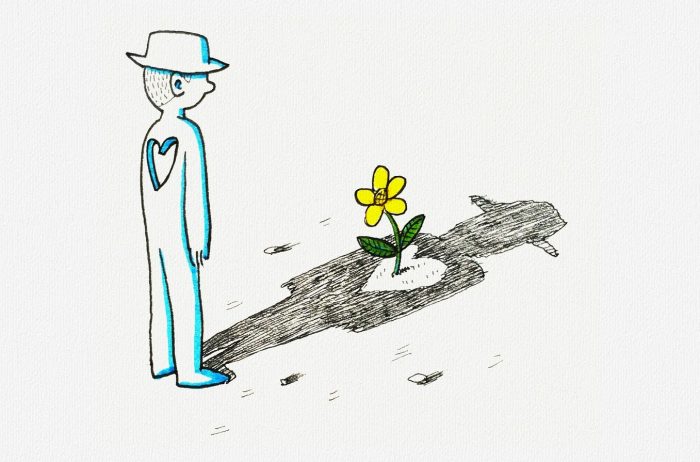
During my childhood in my native land, Scotland, a popular saying was: “If they were chocolate they would eat themselves.”
The connotations behind this proverb were that this individual loved themselves and that this was not a desirable trait—although this was primarily aimed at those who appeared vain. The undertone was that any form of self-appreciation wouldn’t be tolerated either.
Fast-forward 30 or so years, and I’ve only just made peace with it being okay to “eat myself”—in the metaphorical rather than physical sense.
This is going to be a different kind of self-love article.
For many, finding and loving ourselves is our life’s work, and as such, it’s a popular self-help topic. Much has been written on the subject, and there are countless books dedicated to helping us rediscover our worth and appreciate ourselves, not to mention millions of step-by-step guides, many of which I’ve tried.
I’ve tried the 25 daily self-love practices, and ironically, by step 10, I already detested myself for starting the bloody thing.
One commonality I’ve noticed across the various mediums is that they are all focused on changing our experience externally, such as routines and habits, in order to drip down into our subconscious or to open up our internal world.
Do we really need an external reason or permission to look into ourselves?
Whilst I’m all for buying ourselves flowers and long, indulgent baths, I can’t help but feel there’s a faster, albeit more uncomfortable, route to self-acceptance and love, one we all have direct entry to. In fact, we’re the source of it.
The opportunity to access this route comes frequently, commonly referred to as triggers. Recently, I’ve noticed that I’m getting more internal triggers; something appears out of nowhere without external influence, all self-generated.
These are not always massive triggers. Sometimes, it’s just a flashback to one of my many embarrassing moments, and often, they can be laughed at, but other times they come with a large dose of cringe closely followed by a larger dose of self-loathing, and to me, this is the perfect invitation to look inside.
This is where my three pillars of self-love have helped me:
Pillar 1: Understanding.
In the embarrassment scenario, a question we’ll often ask ourselves is: “Why did I do that?”
All too often, it is a rhetorical question. A better approach is to ask: “What were the circumstances and what was my mental state at that point?”
This process may be shallow, or it may go deep. Sometimes, it’ll just be a case of I drank too much, and that’s easy to evade next time, but then, other times, I’ve been genuinely astounded by where I’ve been taken.
Self-investigation and understanding have a bountiful scope in exploring and understanding our own actions and behavior. We are able to see others more clearly. And in allowing the full emotional charge to surface, we are open for much more empathy.
It’s enabled me to remove myself from being the perceived external target of others’ actions. In exploring my own inner landscape, I’m able to appreciate the complexity and depth of others.
Pillar 2: Acceptance.
I really struggled with this as it relates back to the chocolate tag. I wrote out a list of my good qualities and my less desirable ones, and there were things that I couldn’t even bring myself to write as I was recoiling. It finally clicked that I was viewing my self-acceptance through the eyes of others.
So, I started again and wrote a brutally honest full account of myself for myself—an account of the good and the bad in all it glory.
I realized that if having great tits (as an example only) makes you feel good about yourself, then that’s great, as long as it’s not the only thing you love about yourself (potential shelf life issue). Whatever makes you feel good on the inside goes on the list, no matter how trivial or inconsequential it may seem.
The bad list is equally as important in our quest for self-love. It is vital to be able to celebrate our imperfections. We’re human and not designed to be flawless. We need to learn to accept and be in the flow with this.
Across both lists, I found I had many duplicates—areas that I saw as both good and bad. These were the areas crying out for balance, and this is where I found my opportunity for growth and more self-love.
Pillar 3: Forgiveness.
As we traverse through ourselves, we deploy a hell of a lot of forgiveness along the way—through the process of understanding and accepting myself, I looked at the other roles I played in my life, and I found out that I was able to fully see those roles appear in certain situations. This allowed for a change in my perspective, and in turn, it means I have fewer external triggers.
Frequently though, I sometimes forget to forgive myself. Letting go of my shame, guilt, embarrassment, and pain is perhaps the most vital part of this process, and this requires a lot of time and patience, but it’s worth it.
This is not an “all or nothing” process. I’m not suggesting we boil the ocean. Self-love isn’t a pass/fail scenario; it’s a spectrum, one that will ebb and flow as we experience life.
If we can view these internal triggers as opportunities and allow them to guide us, then little by little, we can build up a solid foundation, and then, we can use these external sources as a top-up.
No comments:
Post a Comment